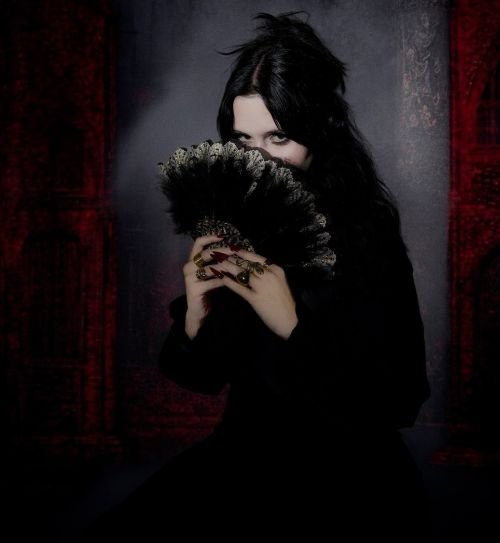FEATURE:
I Turn on My TV
there are a good range of Kate Bush music videos. The quality is not too bad. However, there are very few that are HD/4K. You would think her iconic songs such as Running Up That Hill (A Deal with God), Cloudbusting and Wuthering Heights would be upgraded. I think that Bush would approve. I am not sure why it has not happened already. In terms of expense, it is not going to cost that much to convert many of her videos to 4K. I think it would attract more people. Kate Bush has said in the past how she would love for her videos to be on a DVD. That has yet to happen. However, we are lucky that there are all of her music videos. I do wonder if there is a long-term plan from Kate Bush regarding the visual side. She has remastered her albums more than once and there has been this quest to get these vinyl albums out to people. However, in terms of the music videos, not as much archiving work and retrospection. However, as her big singles are played on radio, people will be able to find the videos easily enough and enjoy. I do hope that there are at least one or two HD/4K videos coming where we get to see this very clean and crisp – and almost cinematic – representation for an iconic song. I guess we have all had the same thought as me. It doesn’t happen much now but, in the past, artists recorded more than one video for a song. Radiohead did it for High and Dry (off The Bends): one video for the U.S. and the other for the U.K./elsewhere. Kate Bush did that. She filmed two videos for Wuthering Heights. The red dress version for the U.S. The white dress video followed. She also filmed two videos for Rubberband Girl. The second was for the U.S. Even though there are examples of Bush doing more than one take of a video, there is this whole other thread and phenomenon: the fan-made video. Many artists have fans who will do their own versions.
Rather than them filming a video and doing a whole production – as that is quite expensive -, there are videos or visuals where fans will put that over a Kate Bush track. One classic example is the video for The Infant Kiss. That song was from Never for Ever but was not released as a single. There have been other attempts. I see there is one out there for Hello Earth from Hounds of Love. I guess it would be a big undertaking that Kate Bush might see as unnecessary but, as classic artists including The Beatles and The Beach Boys have done it, they have allowed various songs of theirs to be given to filmmakers to create modern videos for older songs. They usually revolve around reissues or documentaries, but it does give new light to songs that might not have had a video the first time around. There are songs from Kate Bush’s catalogue that I feel could and should have this kind of consideration. I am thinking about Get Out of My House and Houdini from The Dreaming (1982). Even Jig of Life from Hounds of Love (1985). The Fog from The Sensual World (1989). Mrs. Bartolozzi from Aerial (2005). There are possibilities. I am not sure how fans approach videos when they tackle a Kate Bush song. In the case of The Infant Kiss, this was a video initially made in 1984 that was set to footage from The Innocents – a film that inspired Kate Bush to write The Infant Kiss. Getting the rights to a film or how complex it might be. However, at a time when there is greater access to so many different visual styles and possibilities, it would be nice to see more fan-made videos. There are plenty of tribute acts and cover versions. However, not many fans of filmmakers taking a Kate Bush song and doing something new with it. I don’t feel it would need Kate Bush’s permission to do that. People can cover her songs without permission, so I am not sure whether someone would need to wait for Bush to give her go-ahead.
Her music is arguably more popular now than it has ever been. There is a lack of HD and 4K Kate Bush videos (some fans have done their version but it doesn’t look that great and I don’t think it is genuine HD by the look of things). Maybe there will not be anything as big as what The Beatles did with songs such as I’m Only Sleeping or The Beach Boys’ Wouldn’t It Be Nice for instance. However, there are albums with big anniversaries coming up. Never for Ever is forty-five later in the year. Hounds of Love turns forty. Aerial will be twenty. Big albums that won’t get vinyl reissues or anything from Kate Bush. I would love if a filmmaker got permission to do videos for songs from that album. Whether they are animated or feature actors playing out scenes and scenarios. There is a role for the fan-made video. So many songs under-explored or unknown that could do with a video. I would be very tempted myself. My favourite Kate Bush song is Houdini. It would be great either to put some existing footage over that song or do something from scratch. There are actors I would have in mind to play the parts. Maybe Kate Bush would need to give her permission. Some might think it strange to do something like that where it is not tied to an anniversary. However, as many artists have plenty of fan-made videos and Bush has had a few in the past, I wonder why there is an absence now. Her music videos and the visual side of her work is something that fascinates me.
I use The Beatles and The Beach Boys as examples of bands who have had recent music videos made. Their well-known songs given a new filmed version, an animation or, for most of the songs, the first music video. I am thinking about those Kate Bush anniversaries. Most eyes will be on Hounds of Love in September. I am writing a run of features for that album. It would be wonderful for new filmed videos for Running Up That Hill (A Deal with God) or even Hounds of Love. Tracks from The Ninth Wave not released as singles. Visualisations of tracks such as Waking the Witch or The Morning Fog. Never for Ever has a big anniversary. I wonder if Kate Bush has considered this at all. She has no objection to reissuing albums and has done archiving for a few years now. Maybe she is past that stage. She has always had a love of music videos and loved doing it. Perhaps the financial constraints put fans off or there are legal requirements and express permission from Kate Bush. That would be a shame if true. However, given the beauty of the recent Little Shrew (Snowflake) video and how Bush brought that non-single to life in a way that reframed the song, it is only right that fans get their opportunity to approach her work like that. Gems from 50 Words for Snow – where Snowflake features – such as Among Angels. I know there were some animated videos for tracks on that album. Looking back at the classic catalogue and these iconic songs, a new generation would have their ideas of reworkings or new visuals. How Army Dreamers and Breathing – from Never for Ever – could get an animation or a powerful filmed video each.
It is a thought I have had for a while and I wonder if it is one other Kate Bush fans also share. I know there will be. It is likely we will see some activity from Bush later in the year. She has revealed that she is keen to work on a new album, though that might not come out until next year – though never say never! She has reissued albums and won’t do that again. However, there definitely will be something around Hounds of Love turning forty as that is not too important to pass up! Among the many Kate Bush dreams, being tasked with a music video and choosing a song to take on is tantalising. I love the limited fan videos there are out there. Vidding is a fan labour practice in media fandom of creating music videos from the footage of one or more visual media sources. I know Queen had a vidding/fan-made video in 2019. Maybe some would say TikTok sort of allows fans to make short videos anyway. It is a way of taking a Kate Bush song and doing something over it. It is not the same as an actual video and people do not usually create something and put it over an entire song. There is a role and demand for traditional filmmaking and this labour of love. I don’t know. Of all the artists in the world who deserve this tribute and run of fan videos – aside from The Beatles perhaps! – is Kate Bush. The Infant Kiss showed that it can be done and done well – and Kate Bush loved that video. Since then, really only the odd thing here and there. With a whole wave of new fans and a whole wave of creatives and incredible filmmakers out there who love Kate Bush’s music, I know that there is…
DEFINITE demand.

















































